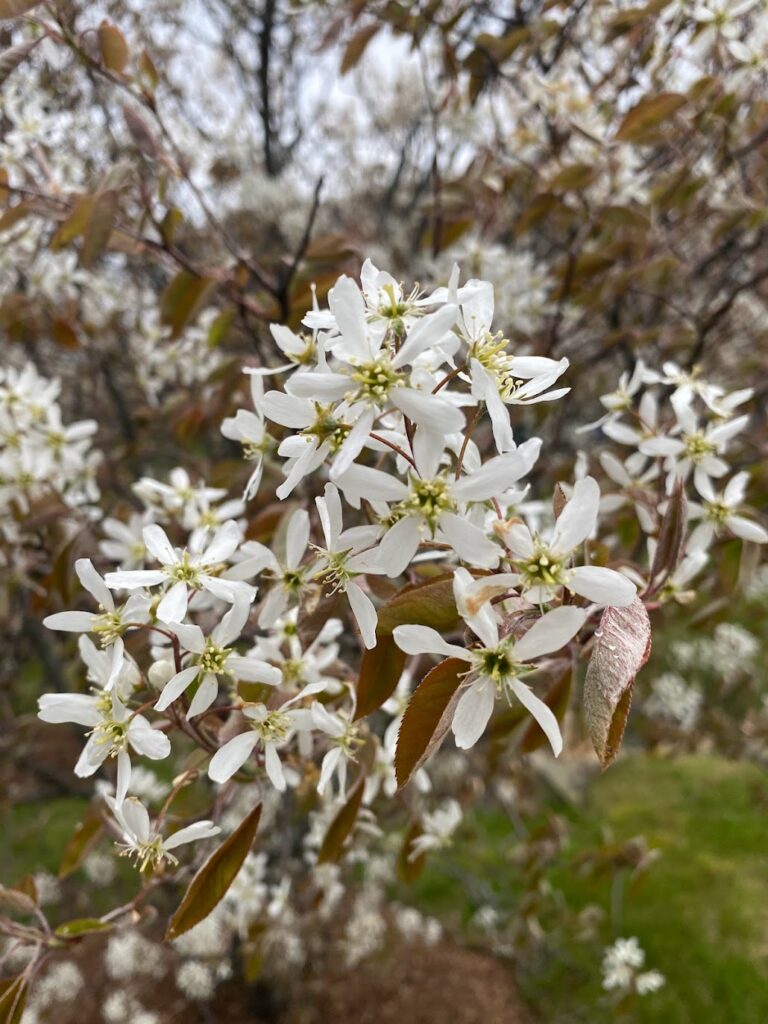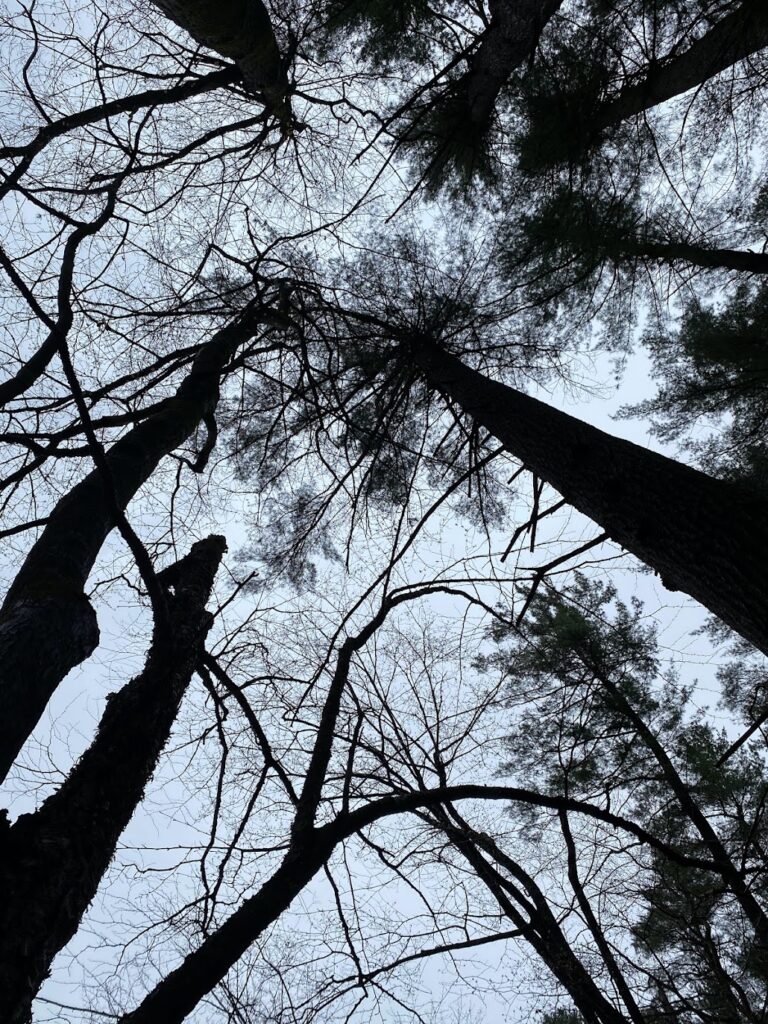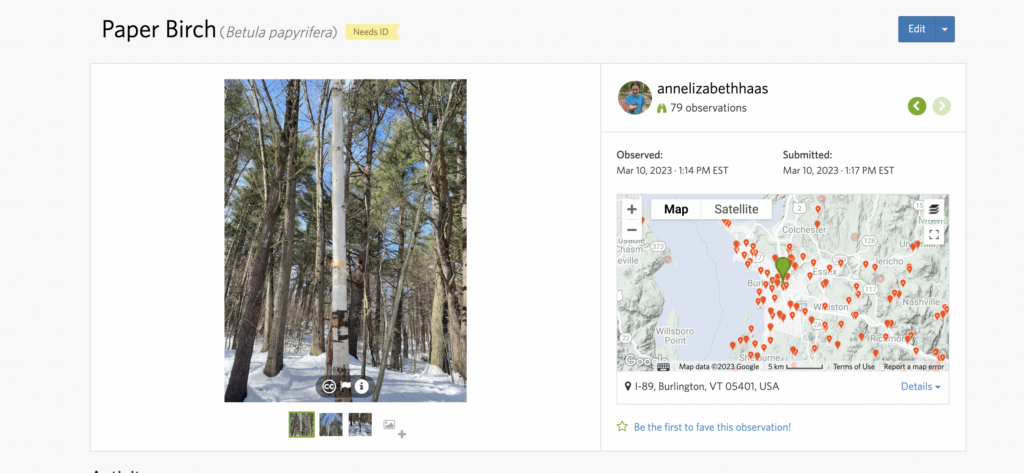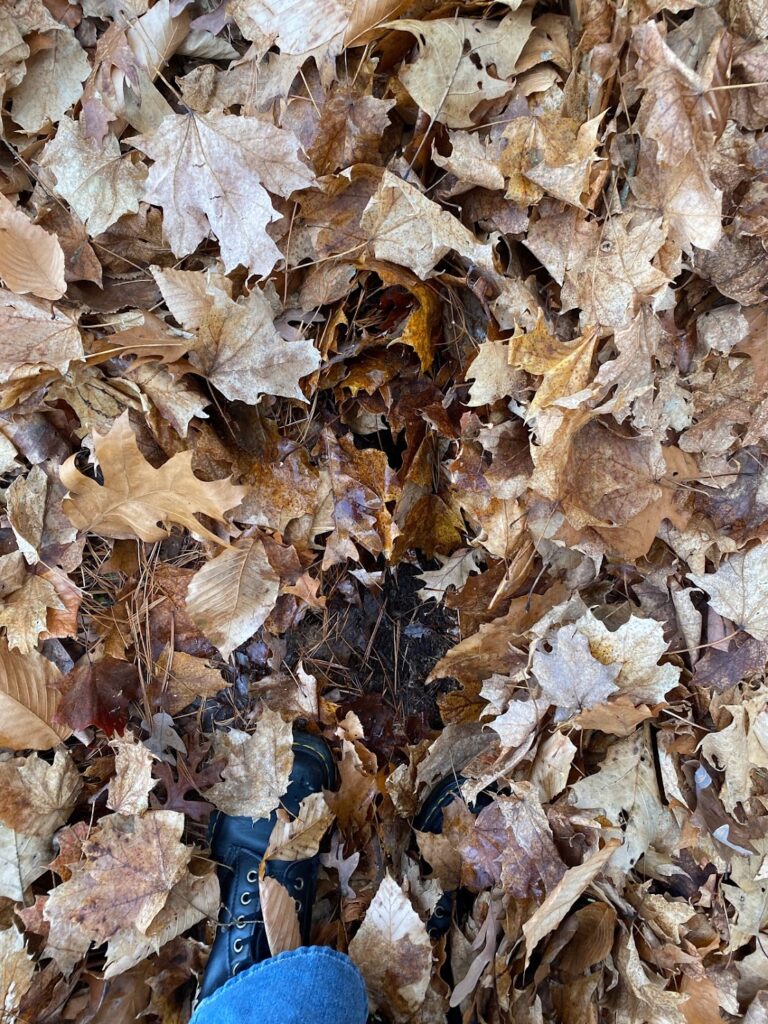Where I went
I had the rare privilege of getting to observe species in three different cities during this city nature challenge. On Friday I was home in Philly and observed some beautiful flowers at my home. Spring is in full force in Philly. On Saturday evening and Sunday morning I was in New York City, and then on Sunday afternoon I returned to Burlington and made some observations here. Since I was traveling so much during the weekend I did not have as much time to make a lot of observations as I would’ve hoped, but I think the diversity of places I got to observe in made up for the lesser quantity of observations.
Home
I live in New Jersey right outside of Philly.


I observed many beautiful flowers while home, some of which are seen in the images below. I also heard lots of birds, but didn’t manage to get any pictures sadly.



Burlington
Burlington is my home away from home, and although I didn’t have much time to observe when I returned Sunday, I did make some observations in the area by my dorm.



iNaturalist Experience and Worldwide City Nature Challenge
I found iNaturalist very intuitive and easy to use. I had been using the app for years, but I had no idea about the City Nature Challenge until this year. I will definitely be using iNaturalist to participate in future years. I like that other people can help you to identify species that you are unsure about, it is a great tool for learning to identify more species. I also loved using the app to see species observed in other areas of the world, as well as following the CNC leaderboard for cities around the world. I feel like so many cities could do so much more if the CNC was more widely publicized.





























